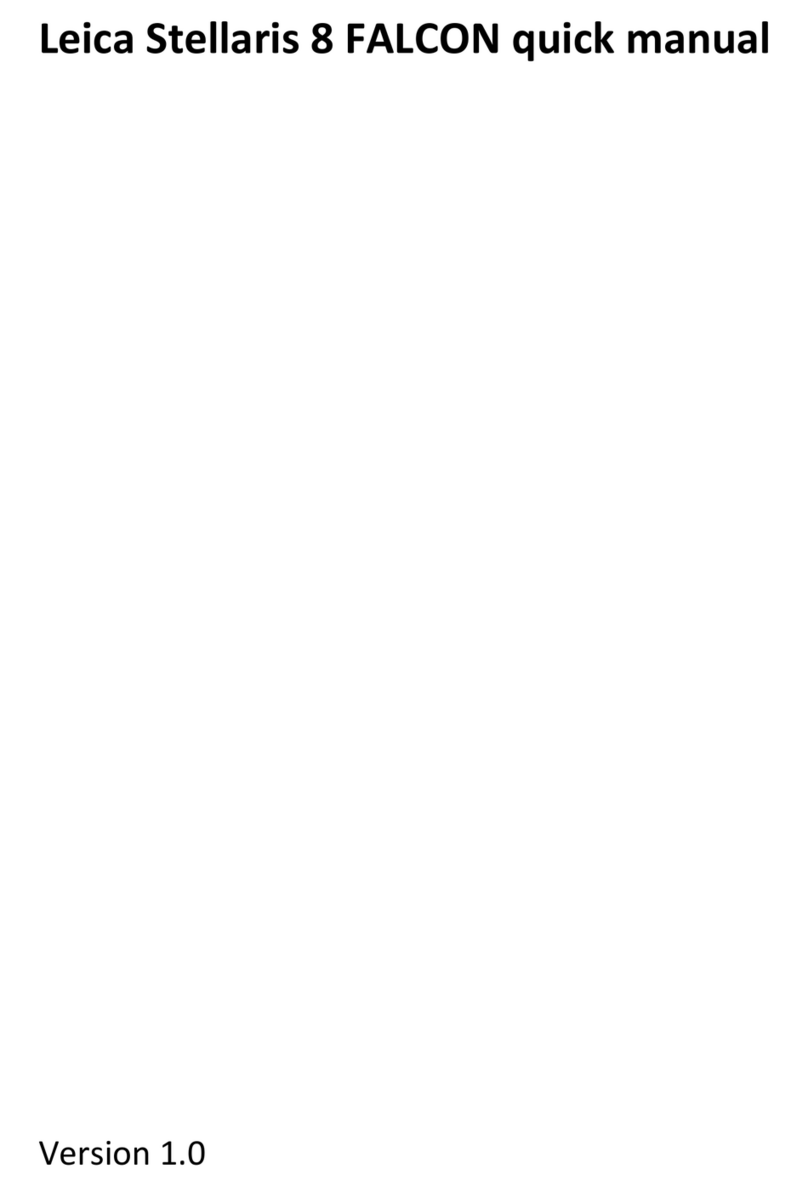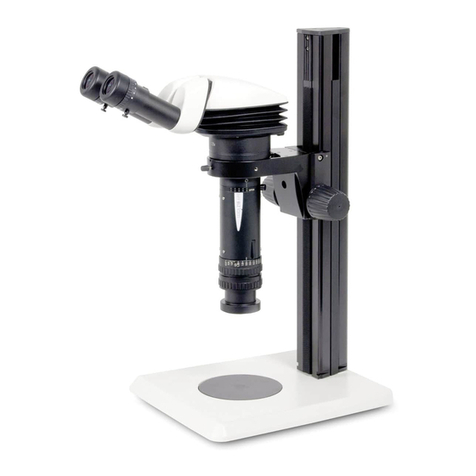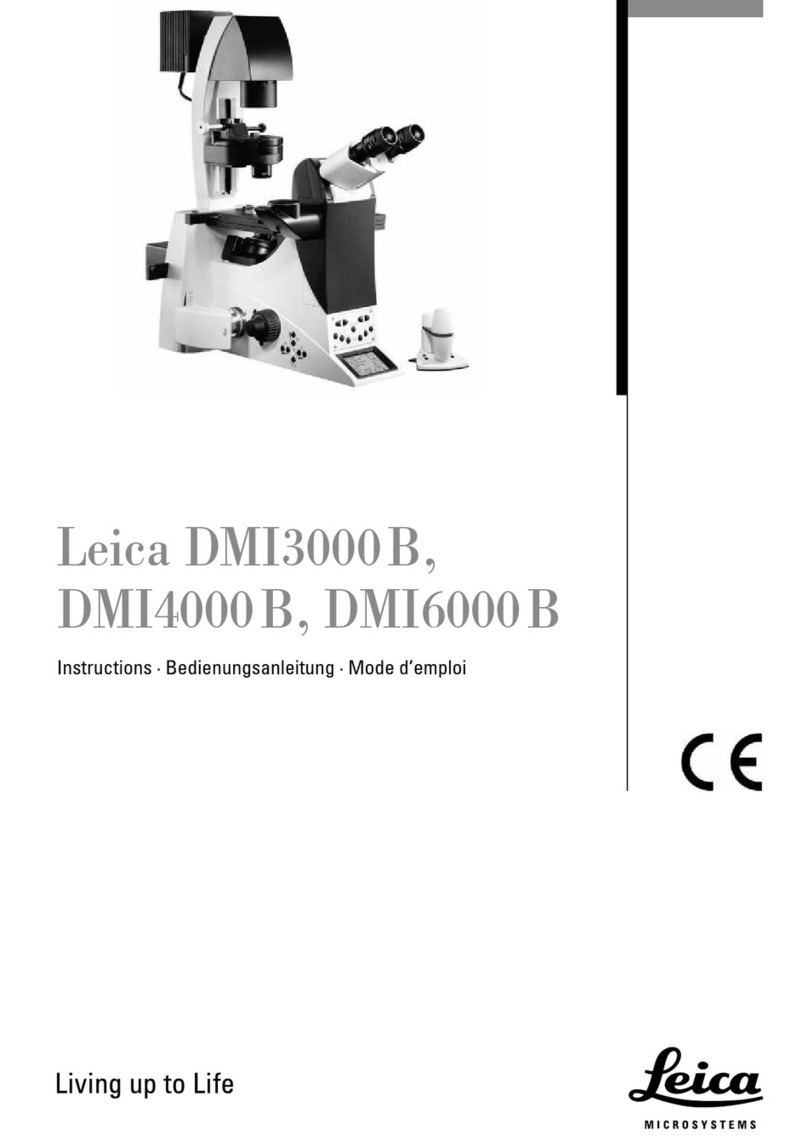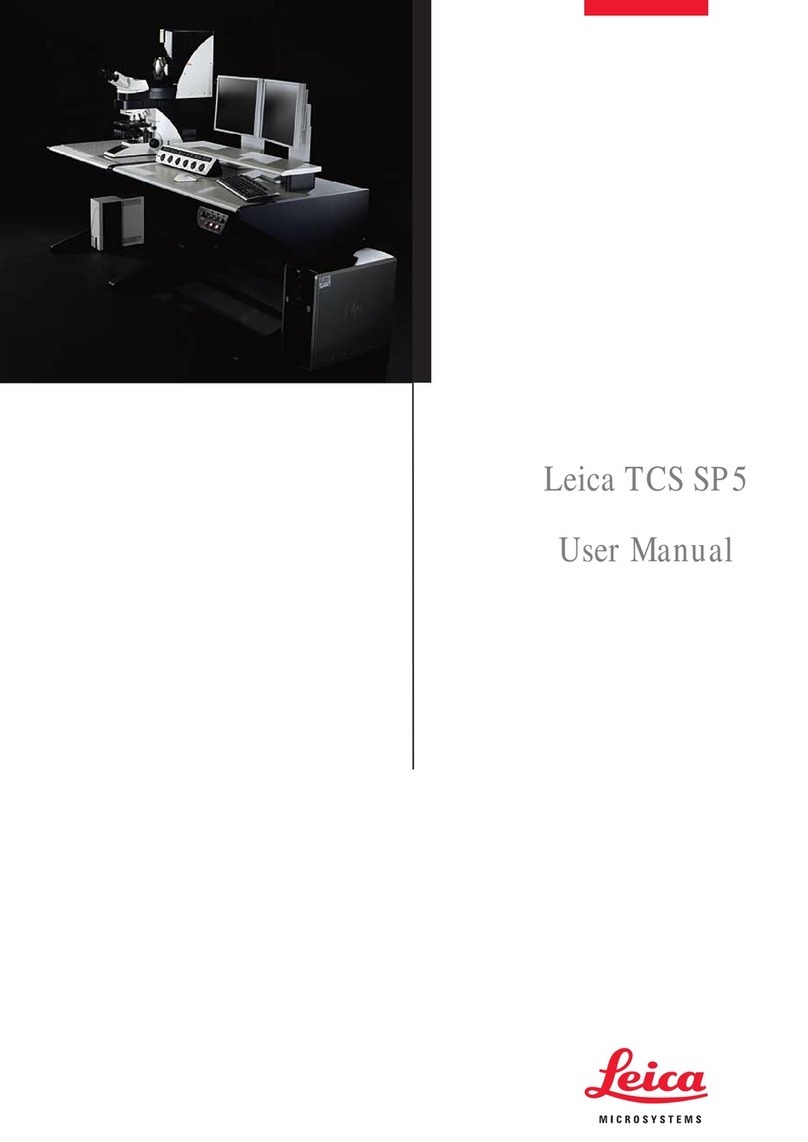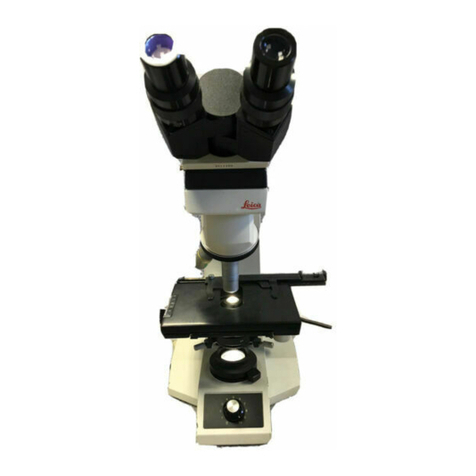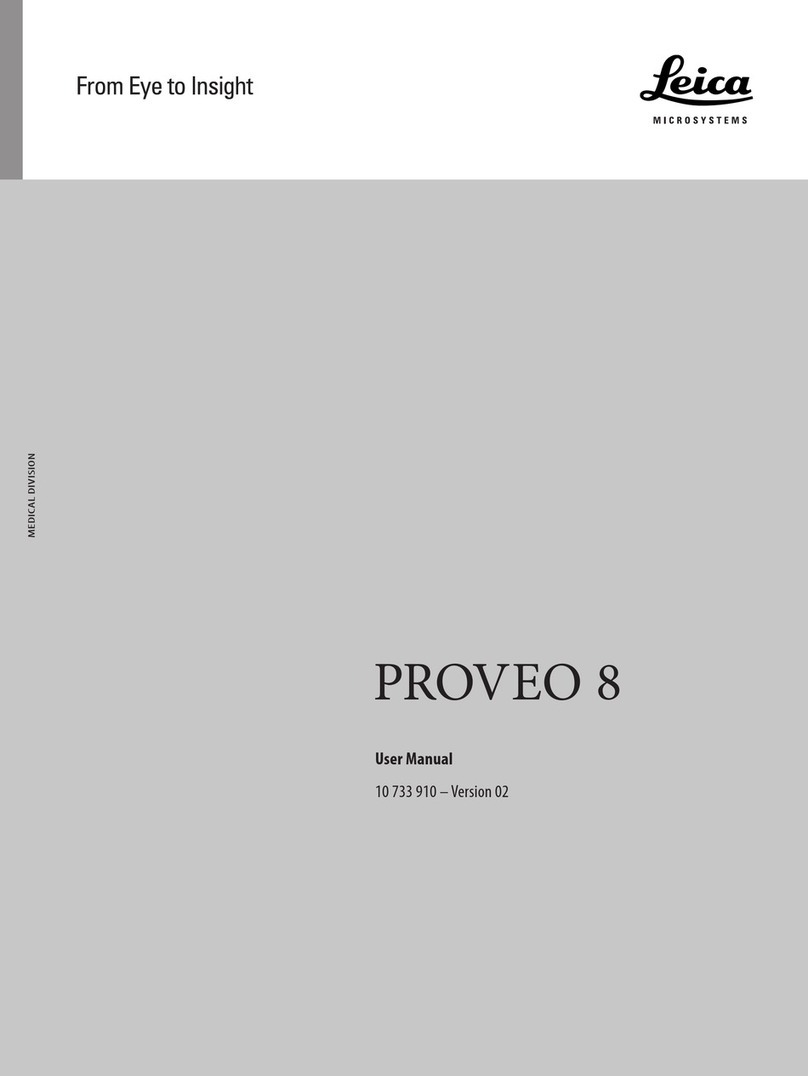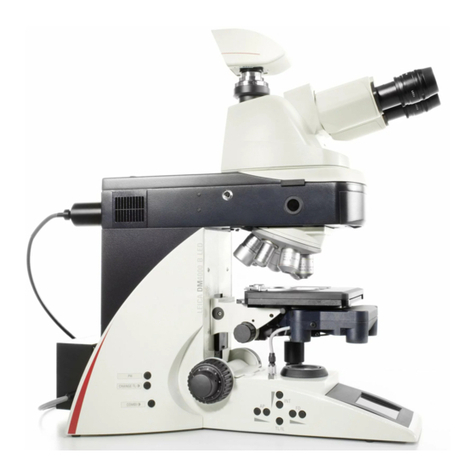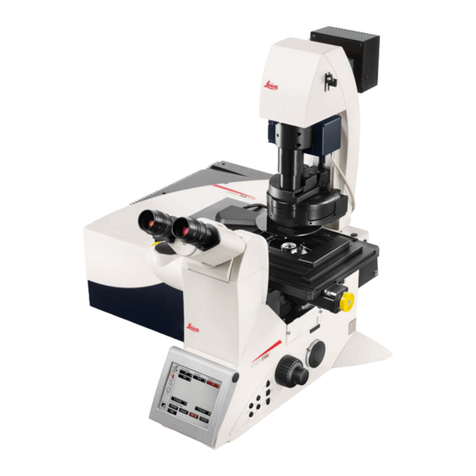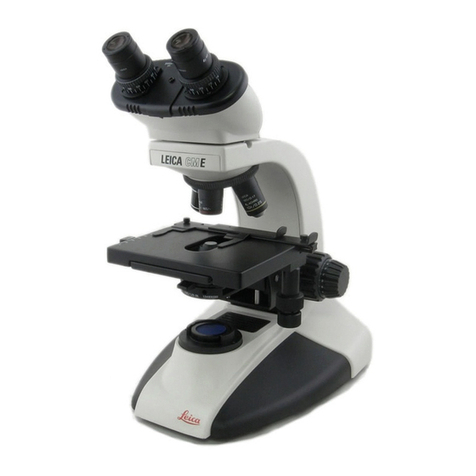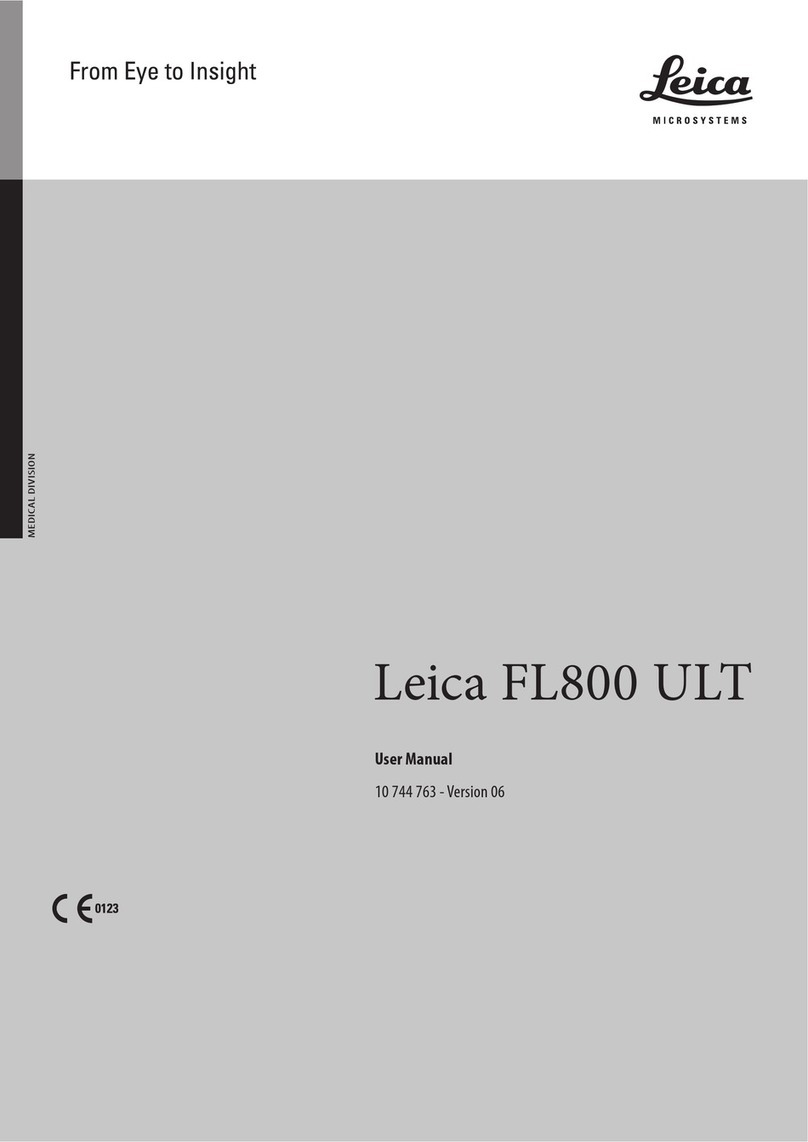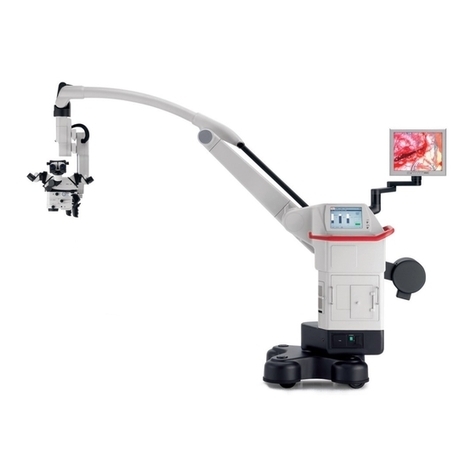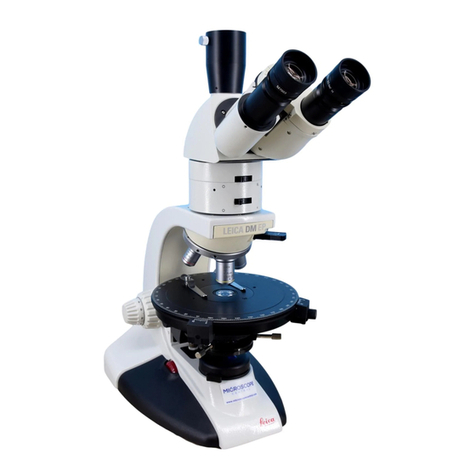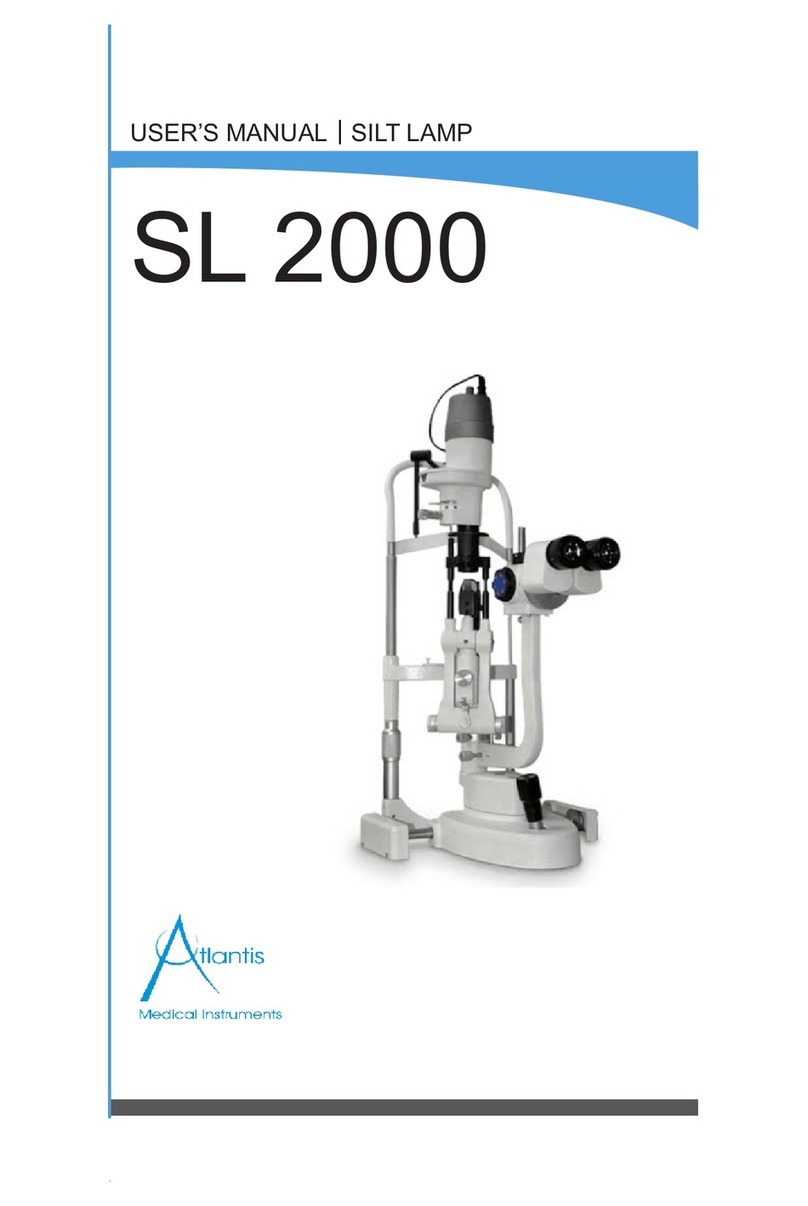Leica DM100 User Manual Important Notes 10
Health Risks and Dangers of Use
Health Risks
Workplaces with microscopes facili-
tate and improve the viewing task, but
they also impose high demands on the eyes
and hand muscles of the user. Depending on
the duration of uninterrupted work at such a
workplace, impaired vision and problems with
the musculoskeletal system may occur. For this
reason, appropriate measures for reduction of
the workload must be taken:
OOptimum workplace layout
OFrequent changes of activity
OThorough training of the personnel, giving
consideration to ergonomic and organiza-
tional aspects
The ergonomic optical design and construction
of the Leica microscopes are intended to reduce
the exertion of the user to a minimum.
Danger of Infection
Direct contact with eyepieces can be a
potential transmission path for bacterial
and viral infections of the eye.
The risk can be minimized by the use of
personal eyecups.
Dangers during Use
OThe Leica DM100 may be connected to a
grounded socket only.
OThe Leica DM100 may be used when it is in
proper working condition only.
LED Class 1 /LED 1 Laser Product
The illumination meets laser class 1 require-
ments in accordance with IEC 60825-1 "Safety
of Laser devices".
Caution: Hazardous radiation may occur if
controls, adjustment jigs, or procedures other
than those outlined in this User Manual are
used!
LED Class 1
Class 1
LED Product

